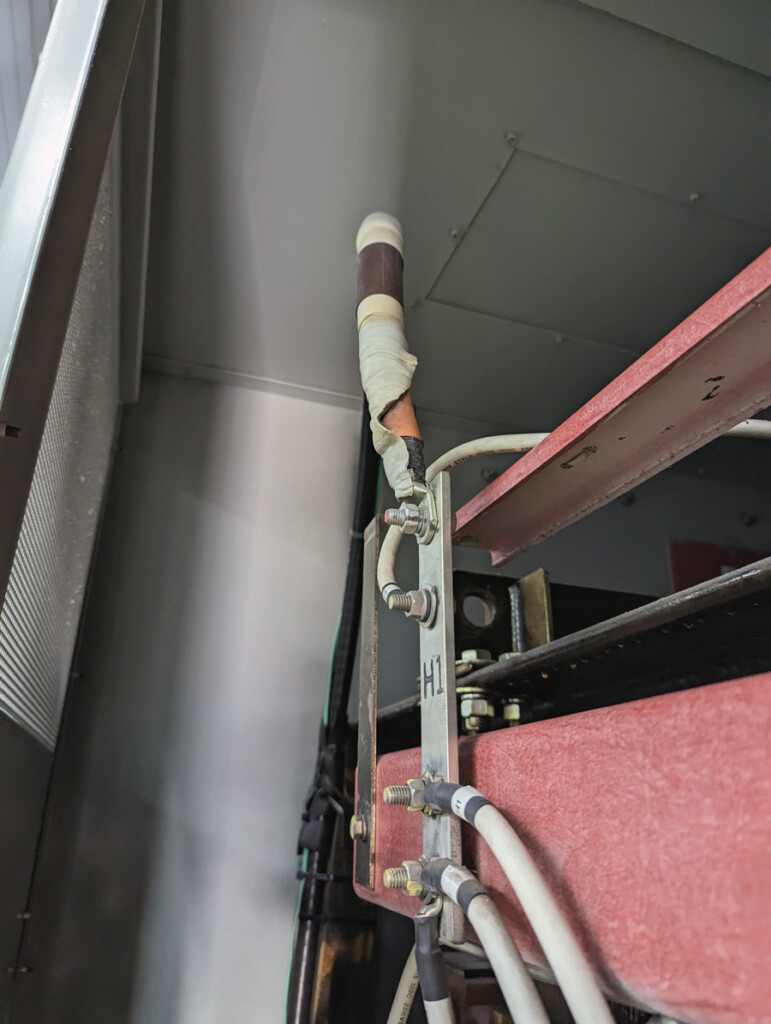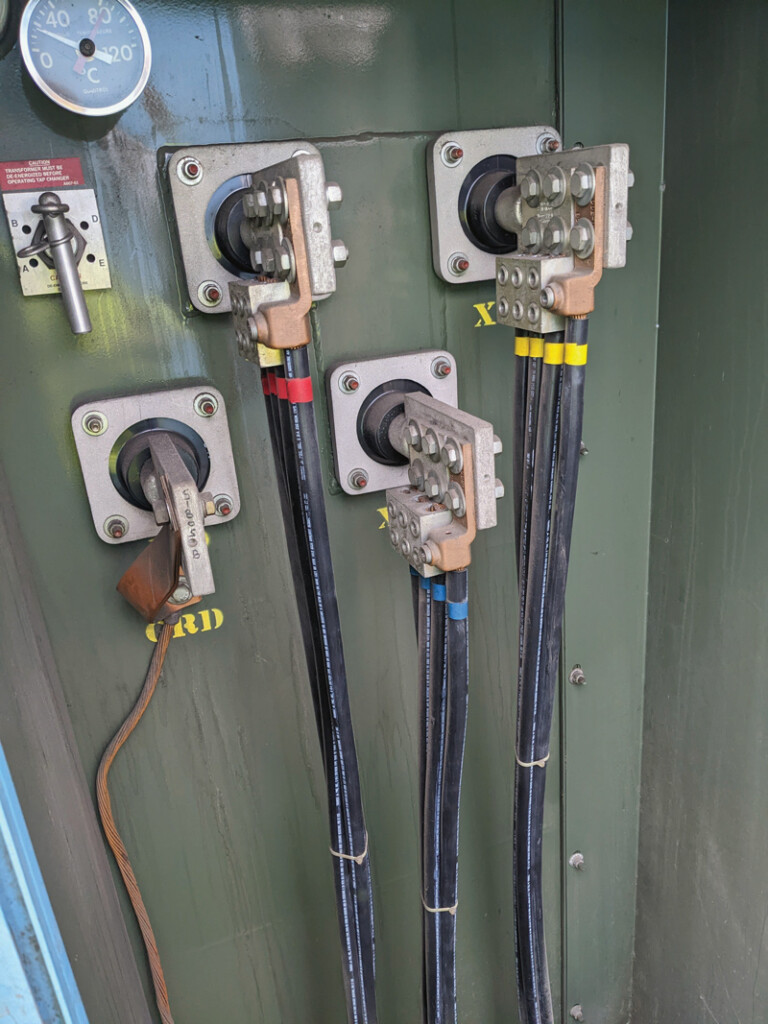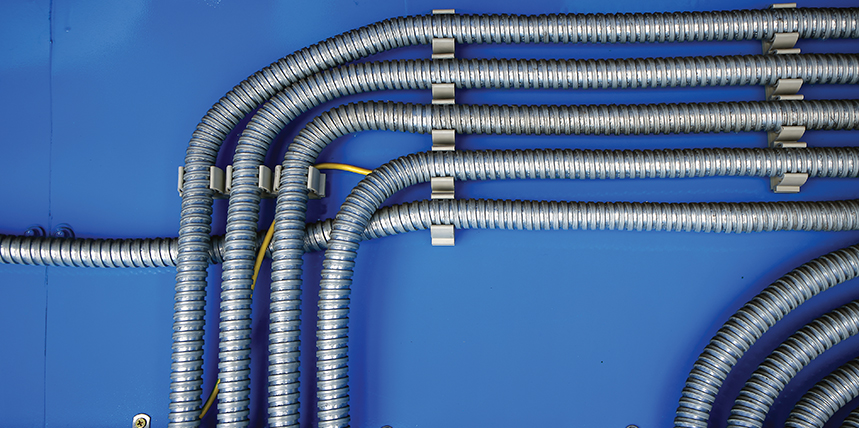NETA’s ANSI/NETA standards are some of the most useful publications for the electrical power testing industry. The standards provide guidance to those trying to maintain our fragile electrical infrastructure.
Safety, reliability, and quality were the core principles that drove NETA to pursue the creation of a set of industry standards for electrical power equipment and systems. NETA is accredited by the American National Standards Institute (ANSI) as a standards-developing entity.
Most of the electrical power distribution infrastructure seems static, and in many facilities, the mindset for electrical equipment and devices is “set it and forget it.” However, much of the existing equipment is made up of electromechanical devices. Most of these electrical and mechanical components — if not set properly, commissioned properly, and maintained properly by appropriately trained personnel — will fail, resulting in costly downtimes for these facilities.
NETA currently has four ANSI-accredited standards:
- ANSI/NETA MTS-2023, Standard for Maintenance Testing Specifications for Electrical Power Equipment and Systems
- ANSI/NETA ETT-2022, Standard for Certification of Electrical Testing Technicians
- ANSI/NETA ATS-2021, Standard for Acceptance Testing Specifications for Electrical Power Equipment and Systems
- ANSI/NETA ECS-2020, Standard for Electrical Commissioning Specifications for Electrical Power Equipment and Systems
The ANSI/NETA standards, much like the electrical equipment they are written for, are not static. As new technology is developed and new research emerges, the consensus shifts on which tests are considered required versus optional and new techniques are evaluated.
REVISING STANDARDS
As part of NETA’s continuous improvement process and to align with the most current related standards and procedures, NETA revises one of its standards each year following the American National Standard (ANSI) process. ANSI/NETA MTS has now been revised to the latest year — 2023. Those revisions come through the hard work of NETA’s Standards Review Council (SRC).
The SRC is responsible for approving revisions to NETA’s technical publications on a stated timetable. The SRC gathers public comments, reviews each section of the standard, and makes recommended edits to bring the standard up to date. The revised standard is then circulated through other subject matter experts within the industry, including manufacturers, architects, engineers, facilities managers, etc., for review and comment before being published and released. This process sometimes takes a year or more of preparation to verify the standards are up to date and as close to consensus as possible.
CABLE TESTING REVISIONS
The 2023 ANSI/NETA MTS 2023 revision includes a major rewrite of the medium- and high-voltage cable testing section. Cables rarely, if ever, move. Most are not subject to wild variations in their chemical or electrical makeup. So, for many, the expectation was that cables do not need to be routinely tested. Furthermore, misinformation has spread through the industry that routine cable testing damages cables. An EPRI study in the mid-1990s further complicated the issue by providing evidence of poor test practices and cable damage from DC overpotential testing of cross-linked polyethylene insulated cables.
All of these complications and more resulted in little or no consensus throughout the industry on medium- and high-voltage cable testing. Therefore, for a little more than a decade, the ANSI/NETA MTS standard left much of the cable testing specifications open to broad interpretation. In 2020, NETA’s Standards Review Council (SRC) determined it was time to revisit this section, and a subcommittee was created to review the current landscape of cable testing and make recommendations for a revised section with clear direction on the tests to perform. That subcommittee assembled cable manufacturers, test equipment manufacturers, end-users, and NETA Accredited Companies to agree on the latest consensus. The subcommittee pooled the available research, standards, and test data and created recommendations for the revised section. This article reviews the key changes to the cable testing section of the new MTS 2023.
Certain items in the MTS specifications for cable testing were significantly revised. Some sub-sections, like the rest of the revisions in the standard, were minor changes that might not be noticed without a thorough comparison of the standards. Those minor edits included:
- Adding connectors of cables as part of the general cable inspection
- Looking for all forms of degradation (Figure 1)
- Checking supports and cable trays
- Verifying cable routing through window current transformers
- Clarifying minimum bending radii
- Optionally checking cable data to drawings and specifications

Several new and possibly different methods of testing that would impact testing organizations, such as testing all phase conductors together during insulation resistance testing (Figure 2) and optionally performing jacket integrity testing, are now included in the standard.

The most significant change was for dielectric insulation testing of medium- and high-voltage cables. The industry’s preferences for cable testing have been quite a roller coaster over the past couple of decades. Those preferences are now leveling out and consensus is forming. From a cost versus benefit point of view, the cable subcommittee determined that the preferred method of testing the bulk cable dielectric for a typical cable installation would be a very-low-frequency (VLF) withstand test.
The medium- and high-voltage shielded cable subsection for dielectric testing was the most significant change in the section if not the whole MTS-2023 standard. Previously, the section left it up to the user to determine the method of testing the cable. Now, the section guides the user toward the VLF withstand test. The section still allows the flexibility of DC withstand for laminated dielectric (see definition in the MTS appendix) or extruded cables less than 5 years old, but the majority of installed cables do not fit into those categories. The section also allows for AC (power frequency) withstand testing of the dielectric, but the cost is significantly higher for most installations than DC or VLF, and therefore will likely find little use.
Withstand testing is not the only test method for verifying the dielectric of medium- and high-voltage cables. Tan-delta testing and off-line and on-line partial discharge (PD) testing are additional diagnostic methods to evaluate the condition of a cable system. However, due to issues including the cost, availability, and usability of equipment; the lack of personnel trained to operate the equipment; possible misdiagnosis from improper setup of the equipment; and others, those methods have not yet received wide adoption across the industry. For those reasons, these accurate test methods have been annotated as optional tests. To help standard users better understand when these optional tests should be utilized, a new appendix was added to the MTS and will be reviewed later in this article.
The electrical test subsections were not the only significant edit to the medium- and high-voltage cable sections. Since those electrical tests were updated to reflect specific tests to perform, the expected test values for those tests were also created. The off-line and on-line PD evaluation criteria were kept in the test values section of the standards. The tan delta evaluation criteria, which were too extensive to maintain in the test values area, were moved to new tables in the back. Insulation resistance expected values and Table 100.1 Insulation Resistance Test Values were also updated.
The consensus was that the acceptable insulation resistance values of shielded medium- and high-voltage power cables are not easily put into a table due to differences in conductor and insulation geometry, temperature, and most importantly, length. The correct method of verifying insulation resistance is a trigonometric formula with dielectric constants that are not easily attainable. Therefore, although the insulation resistance test is a great pre-test to determine suitability for further testing, it should not be utilized to find a discrete number for acceptability in cable testing. These changes in evaluation provided a much-needed complement to the changes in the electrical test section.
TABLES
MTS-2023 saw many more changes to the tables than is typical. Most of the changes to the tables were minor or cosmetic, but some were a little more significant or may have more impact than expected, such as the note in Table 100.1 about cable insulation resistance.
- Table 100.6.1 on extruded dielectric cable (see the definition in the MTS appendix) DC withstand testing revised the table to remove the conductor sizes, added a column for 173% insulation, and revised all the notes.
- The title of Table 100.6.2 on laminated dielectric DC withstand testing was revised and many changes were made to the notes.
- The confusing peak column was removed from Table 100.6.3 on VLF testing and more high-voltage test levels and some extra notes were added.
- The title of Table 100.6.4 on testing with damped alternating current was changed to reflect its preferred use.
- Table 100.6.5 on cable testing with power frequency was revived and updated with IEC test values.
New Tables
Three new tables were added:




APPENDICES
The appendices received fewer changes than the tables. A couple of definitions were added including laminated and extruded dielectric cables, and some frequencies of maintenance were adjusted in Appendix B.
The significant change in the appendices came from the addition of a new Appendix D. Understanding that a simple 30-minute withstand test is not always the best choice for every cable system, Appendix D (Table 4) was created to help users determine when a better test method should be chosen. The table includes cable shielding, insulation type, and the criticality of the circuit as factors to be considered. The criticality of a circuit is a key factor in determining how much testing to perform. For example, a single-phase, parking-lot light circuit might not need as much exhaustive testing as the main incoming feed to a large data center, hospital, or refinery. Appendix D includes recommended tests for each type of cable system and roughly defines a high-criticality circuit. This extra appendix helped round out the missing information from the cable testing section when specifying a single test for the dielectric to allow flexibility and direction for those outside the typical medium-voltage cable system.
SUMMARY
The NETA testing standards, much like the equipment they cover, may seem static and not need any extra inspection as the years go on, but that is far from the truth. These standards require constant refreshing, reviewing, and updating to verify they continue to provide the most relevant and up-to-date information necessary to aid our complement of skilled technicians in their endeavor to provide an excellent, safe, and reliable electric power system for us and our communities.
I hope this article about the updates to the cable testing section of ANSI/NETA MTS-2023 has provided some clarity and sparked your interest in re-examining the standard to stay up to date with your knowledge of the requirements as you help maintain our electrical infrastructure. If you have comments or questions about the NETA standards, please look to the end of any one of the NETA standards (Appendix E for MTS-2023), fill out the form, and send it to NETA staff at neta@netaworld.org. The SRC will be looking into those comments for the next standard.

Chasen Tedder started at Hampton Tedder Technical Services in 2005 and is currently Vice President. He is in charge of operations, engineering, facilities, and sales. Chasen has spent over a decade in the field testing, maintaining, commissioning, and field engineering electrical power distribution systems. His specialties include cable testing, protective device coordination and testing, and online partial discharge testing. Chasen is an IBEW member, a California general electrician, a senior utility P&C technician, a NETA Level 4 Certified Technician, and a Professional Engineer in several states. He is the Second Vice President of the NETA Board of Directors and a member of the NETA Standards Review Council. Chasen earned his BS in electrical engineering with an emphasis in Power Systems at California State University, Long Beach.
